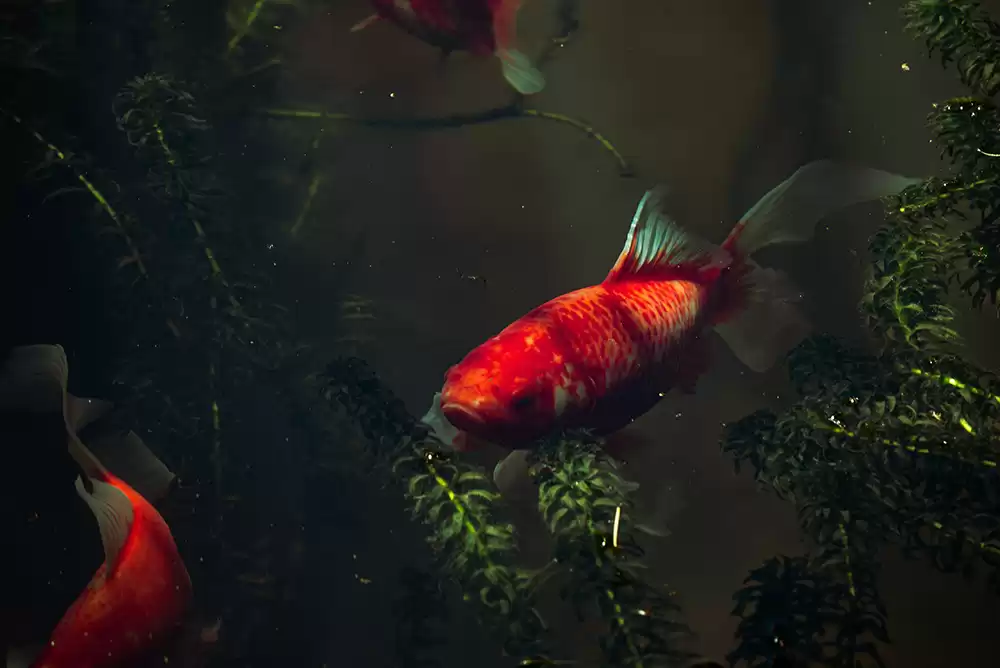
01 Sep Can Goldfish and Koi Live Together?
Integrating goldfish and koi into a single pond can enhance the visual appeal of your aquatic garden, but it requires careful planning and management. In this article, we will explore the feasibility, benefits, and considerations of keeping goldfish and koi together in your pond, ensuring a harmonious and healthy environment.
Compatibility of Goldfish and Koi
Goldfish and koi are both members of the carp family, making them genetically compatible and generally able to coexist peacefully. However, their compatibility extends beyond genetics. Both species are hardy and adaptable to various water conditions, making them suitable for shared living spaces. Despite their compatibility, it is essential to consider their different behaviors and needs to create a balanced pond environment.
Size and Space Requirements for Mixed Ponds
Koi are significantly larger than goldfish, with adult koi reaching lengths of up to 36 inches, while goldfish typically grow to about twelve inches. A pond intended for both species must provide ample space to accommodate their size differences. As a general rule, aim for at least 1,000 gallons of water for the first koi and an additional 250 gallons for each extra fish. For goldfish, allocate about twenty gallons per fish. Ensuring adequate space reduces stress and promotes healthy growth for both species.
Feeding Habits and Dietary Needs
Both goldfish and koi are omnivorous and have similar dietary needs, simplifying feeding. However, koi tend to be more aggressive feeders, so monitoring feeding times is essential to ensure goldfish get their share of food. A varied diet consisting of high-quality pellets, vegetables, and occasional protein treats will keep both species healthy. Consider feeding smaller amounts more frequently to ensure all fish receive adequate nutrition.
Water Quality and Filtration
Maintaining excellent water quality is crucial for the health of both goldfish and koi. High-performance filtration systems are essential to manage the waste produced by these fish, especially given the larger size and higher waste output of koi. Regular water testing for parameters such as ammonia, nitrite, nitrate, pH, and dissolved oxygen levels is necessary. Implementing a robust filtration system and routine water changes will help maintain optimal water quality.
Health and Disease Considerations
Goldfish and koi can share similar diseases, including parasitic infections and bacterial diseases. To minimize the risk of disease transmission, quarantine new fish before introducing them to the pond. Regularly observe your fish for signs of illness, such as behavior, appetite, or appearance changes. Maintaining a clean pond environment and providing a balanced diet will help prevent health issues.
Behavioral Differences and Interactions
Koi are generally more active and may dominate feeding areas, while goldfish are more docile and may prefer to stay in shaded areas. To foster positive interactions, provide hiding spots and shaded areas where goldfish can retreat. Koi’s larger size and more boisterous nature can sometimes lead to unintentional bullying, so ensuring ample space and resources is critical.
Breeding and Population Control
Both goldfish and koi are prolific breeders, which can lead to overpopulation if not managed. Overcrowding can stress fish and deteriorate water quality. To control the population, remove eggs promptly or introduce fish that feed on eggs, such as some species of catfish. Monitoring and managing the fish population will maintain a balanced and healthy pond environment.
Aesthetic Benefits of Mixed Ponds
A pond with both goldfish and koi offers a visually striking display of color and movement. Goldfish come in various colors and patterns, while koi boast vibrant hues and intricate markings. Combining both species can create a dynamic and captivating aquatic landscape, enhancing the overall beauty of your pond.
Tips for Successful Integration of Goldfish and Koi
- Plan Your Pond Size: Ensure your pond is large enough to accommodate both species’ size and space requirements.
- Monitor Feeding: Observe feeding times to ensure both goldfish and koi receive adequate nutrition.
- Maintain Water Quality: Invest in a high-performance filtration system and perform regular water testing and changes.
- Provide Hiding Spots: Create shaded areas and hiding spots to allow goldfish to retreat from more active koi.
- Control Population: Monitor and manage breeding to prevent overcrowding and maintain a balanced pond ecosystem.
- Quarantine New Fish: Always quarantine new fish before introducing them to your pond to avoid disease transmission.
Integrating goldfish and koi can be rewarding and add beauty and diversity to your pond. You can create a thriving and harmonious aquatic environment by understanding their compatibility, size requirements, feeding habits, and other considerations.



